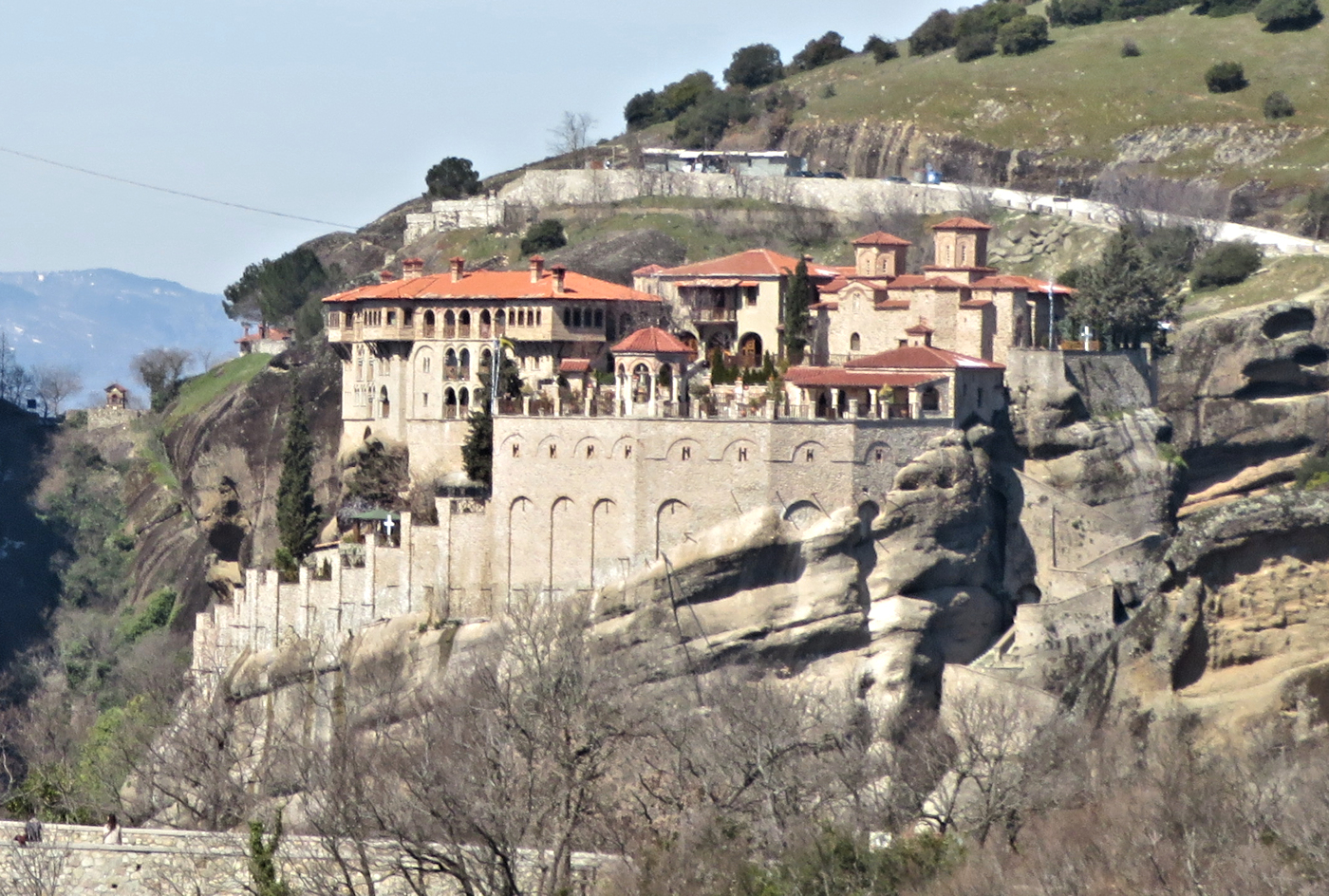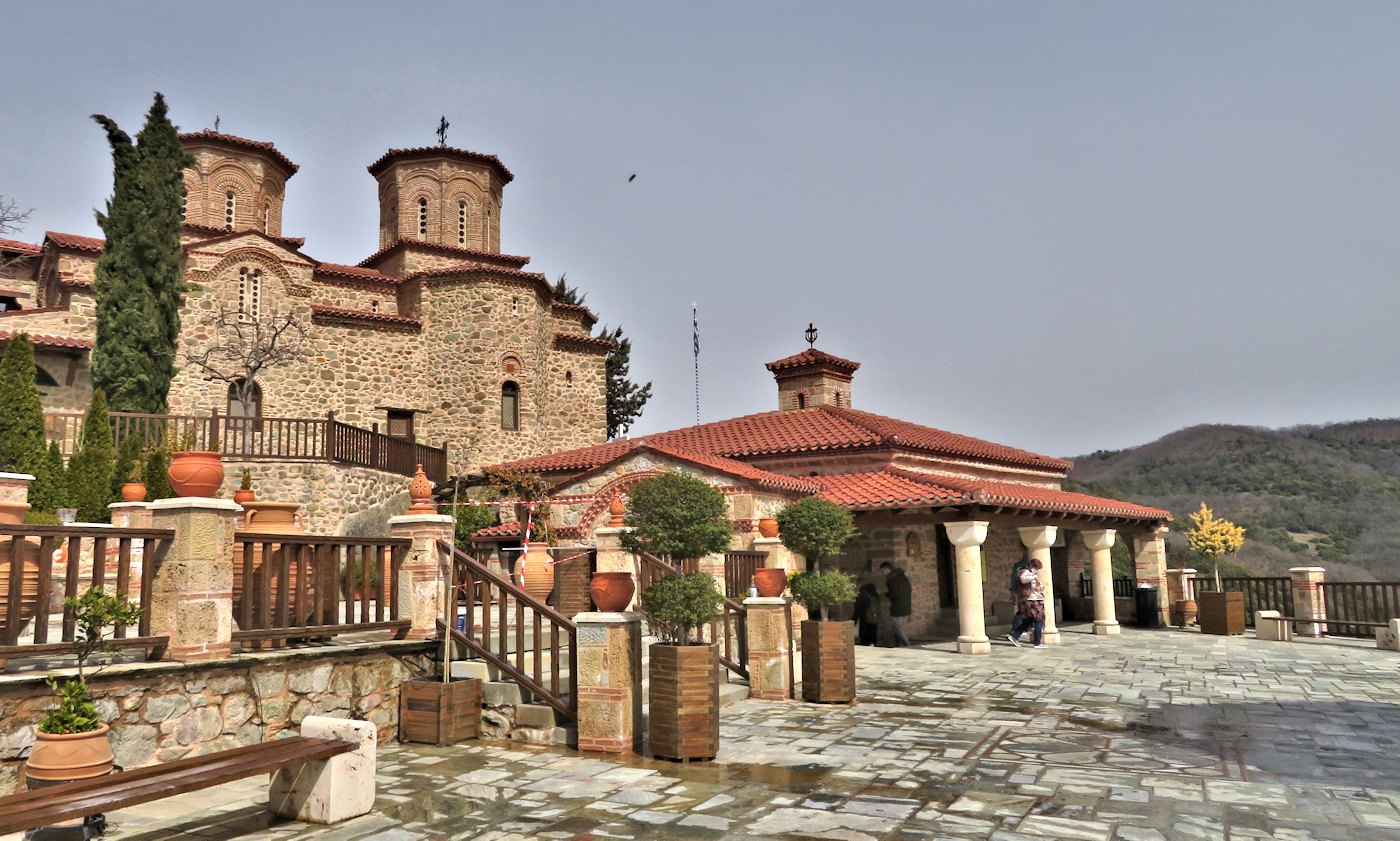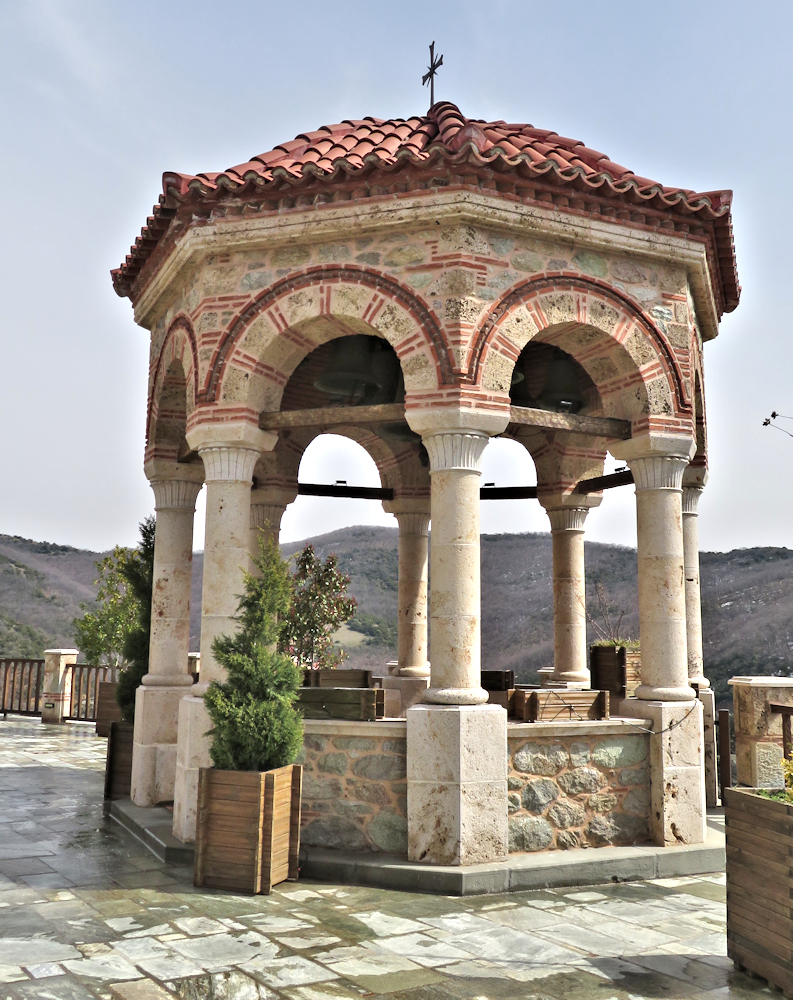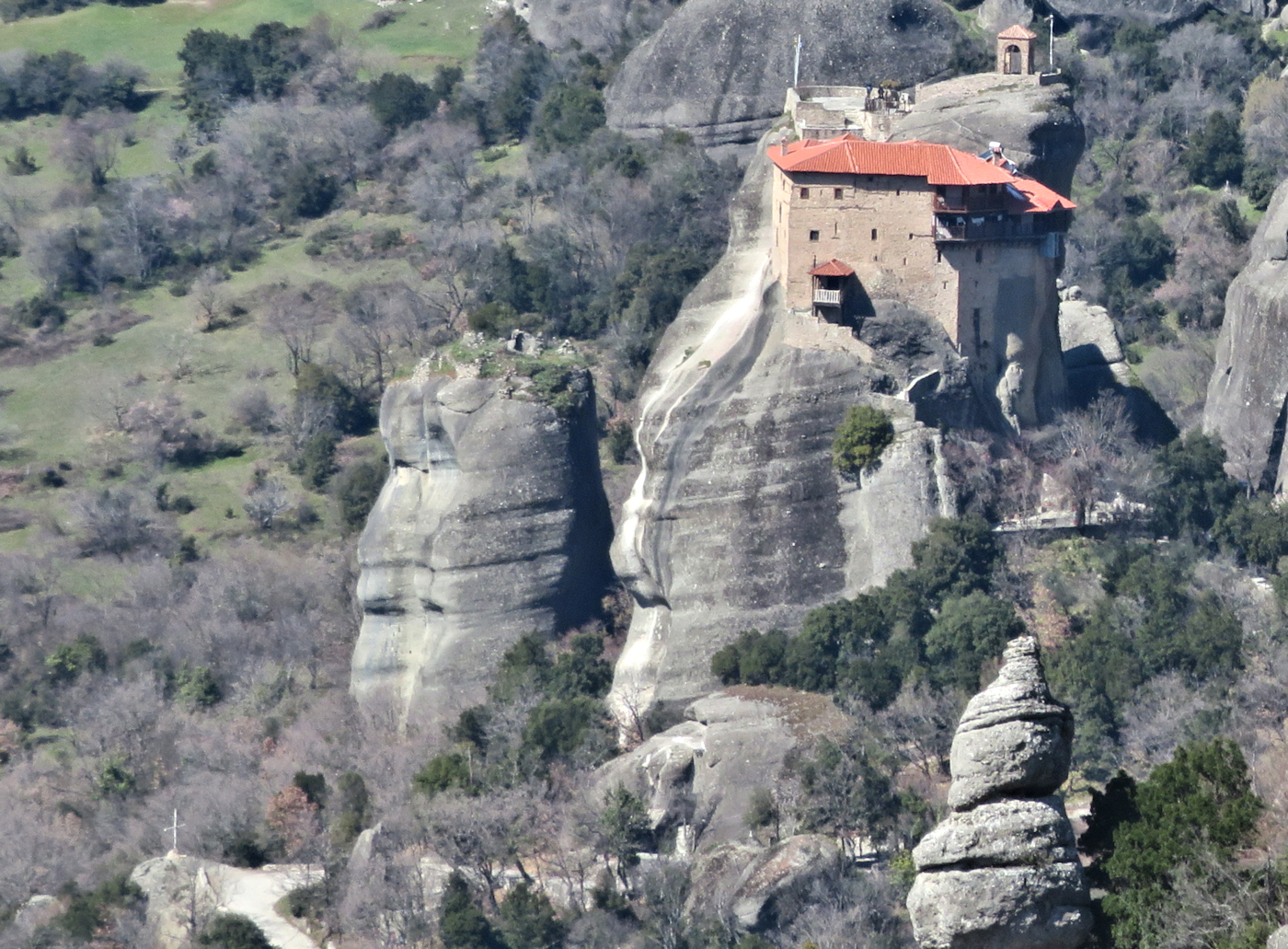A Quick Sojourn in Greece
The Monasteries of Meteora—Part 2
This is the second part of a two-part series about my visit to the monasteries of Meteora in Greece. You can read part one here.

Day Two of My Visit to the Monasteries
The next day I caught the bus at noon to go back up to visit Varlaam Monastery. I had been told by other visitors that they thought this was the most interesting of all the monasteries. I also hoped to visit the little Monastery of St. Nicholas Anapafsas on my way back down the road.
I got on the bus at the bus station, but after a few stops a familiar figure stepped up—it was Fernando! He had to return to Athens that evening, but he also had decided to visit one last monastery before he left. So we were partners again!

Monastery of Varlaam
Varlaam was indeed a fascinating place. The museum there provided an excellent opportunity to learn not only the history of the Meteora Monasteries, but also to learn about the way of life—both historically and in modern times.

As I exited the church, a monk was sitting by the door watching the tourists—probably to make sure they behaved and took no photos. He complimented my skirt and asked about it. I told him that I had purchased the skirt in 1972 and it was very special, and that was the reason I had brought it purposely in order to wear it here at the monasteries. (Women must wear skirts that reach at least to their knees.)
I asked about what everyday life was like for him, what was his job, etc. He told me he did a variety of tasks, cooking, cleaning, talking with visitors—which he enjoyed the most. He had been in the monastery for 17 years. He looked much younger than his 40+ years—perhaps the contemplative lifestyle creates a serenity that holds age at bay. He talked a bit about his beliefs—but in no way proselytizing.
He showed me the relics the monastery holds in safekeeping—the
hands of Varlaam’s founding fathers, Theophanes and Nektarios Apsarades; as well
as the finger of St. John and the shoulder blade of St. Andrew. Pilgrims often
come to see the relics and receive spiritual comfort from them. He said that
Varlaam seems to host three types of visitors: tourists, travelers, and
pilgrims. I was honored when he said, “and I think you are a traveler.”
Cable Car!
I spent so much time talking to the monk, that I figured Fernando was wondering where I was. But after a bit of searching, we found each other. He showed me a few things he had discovered, including a wine barrel which was the size of a small room, and the cable car that is used to transport supplies up to the monastery from a garage near the parking area.
Leaving Varlaam, we walked down toward St. Nicholas Anapafsas. We passed the Monastery of Rousanou on our way down from Vaarlam. Rousanou is now a nunnery but it was closed. However right next to the road was a cage connected to a windlass WAY up at the top of the rock. It is in good enough condition that I am sure it is still in regular use.
Not Enough Time for Everything
We spent so much time at Varlaam that we did not have time to walk down to the Monastery of Saint Nicholas Anapafsas, visit it, and catch the 3:00 pm bus back to Kalampaka. My legs were still tired from the day before and I did not want to walk all the way back to town the long way again. I tried racing down the road to St. Nicholas, but it was almost three by the time I arrived. So, resigned, I just stood in front of the monastery waiting for the bus. Sometimes a traveler has to realize that she has experienced enough—for now.

The next day I returned to Athens on the train, and the day following, catch a short flight to Istanbul. I would have preferred to make my way overland to Turkey via Bulgaria, but the international trains are still halted by Covid.
Goodbye to Greece—for now!
If You Go…
Be sure to dress modestly: No tank tops or shorts for anyone; Women must wear skirts that reach to their knees. Some monasteries have wrap around skirts to borrow or purchase, but don’t count on their availability.
There is a local bus that runs the entire circuit to all the monasteries. It currently leaves Kalampaka every day at 9:00 am and noon from the bus station. It will stop at each monastery. It begins the return trip at 3:00 pm and stops at each monastery. This way you can avoid walking the boring part of the road.
I recommend visiting Varlaam first in order to see the museum and learn about the history. You will appreciate what you see the rest of the day more.
The schedule of opening days for the monasteries is posted here.
Purchase a ticket at each monastery. Current fee is 3€. Bring cash.
You can learn more about the history of these monasteries here.
Where I stayed: I usually travel on a budget, so I chose the Holy Rock Hostel.
There is beautiful trail that begins at the back of the village and ends near the Monastery of the Holy Trinity. This is the trail I took up on the first day. The trailhead location is shown on this map.